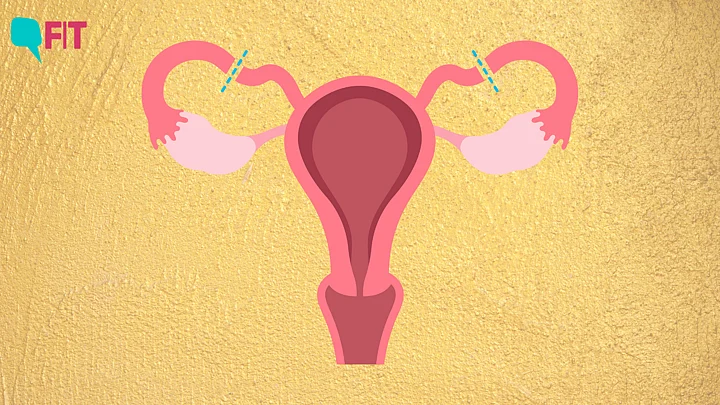Jyoti Sharma, a 42-year-old Accredited Social Health Activist (ASHA) worker, has been married for 25 years. She went under laparoscopic sterilisation around 15 years ago.
In laparoscopy, a device called a laparoscope is inserted through a small incision made in or near the belly button.
The laparoscope allows the pelvic organs to be seen. The fallopian tubes can be closed off or removed using instruments passed through the laparoscope or with another instrument inserted through additional small incisions.
“I underwent laparoscopic sterilisation. I did it because after three children I felt my family was complete. I discussed it with my husband and we both felt that it’d be better for me to do it.”Jyoti Sharma (42), Accredited Social Health Activist (ASHA) worker
Being an ASHA worker, she has seen a lot of women undergo sterilisation – often due to familial and societal expectations rather than personal choice.
She says, "Men shun the concept of sterilisation stating that they are superior and that it would affect their sexual performance."
In India, the topic of sterilisation has long been associated with women, drawing attention to the stark gender disparity in the approach towards family planning.
“Women have to go through pregnancy and the process of child delivery. It takes a toll on their body. The least a man can do is get sterilised. It is not wrong for males to undergo the procedure and society should accept it as the new normal”.Jyoti Sharma (42), Accredited Social Health Activist (ASHA) worker
Despite strides in gender equality, women continue to bear the brunt of sterilisation procedures, often facing financial burdens and mental tolls.
According to the Delhi Government’s Economic Survey released in March 2024, only around 3 percent of the sterilisation procedures were performed on men in the national capital in 2022-23.
In the financial year 2022-23, only 375 men opted for a vasectomy while 11,037 women underwent sterilisation.
This, according to the report, means that the number of women opting for sterilisation is 30 times more than men.
Stigma & Mental Toll: Women Bear More Than Just the Physical Burnt of Family Planning
While there has been a shift towards smaller family sizes, societal norms dictate that women bear the responsibility of family planning, placing immense pressure on them to undergo sterilisation procedures.
Furthermore, the physical and emotional implications of sterilisation, such as changes in hormonal balance and concerns about fertility, can also take a toll on women's mental well-being.
A 2021 study, published in BioMed Central, states that anxiety, depression, self-esteem, menorrhagia, body image satisfaction, and sexual function were significant along the pathway of predictors of quality of life in sterilised women.
Despite these challenges, the lack of comprehensive counselling and support services exacerbates the psychological burden faced by women undergoing sterilisation procedures.
Female Sterilisation Comes With Side Effects Too…
Dr Khaleda Parveen, a gynaecologist says,
“Even though sterilisation is effective, it is not always safe for women. There are side effects in females post sterilisation, like injury to the gut and to vessels. There can also be infections, ectopic pregnancy, incomplete closure of the fallopian tube that can result in pregnancy, and anaesthesia-related side effects."Dr Khaleda Parveen
What is also unfortunate is that women are not made aware of these associated risks either. A study conducted by CEDA Ashoka University in 2024 notes, “Only 58.7 percent of women who had undergone a sterilisation in 2019-21 said they had been informed about the possible side-effects or problems of the method.”
The study also adds, “Nearly five percent of women who had undergone a sterilisation procedure said they regretted it.”
Male sterilisation or vasectomy, on the other hand, Dr Parveen explains, is much easier than female sterilisation. Nowadays, non-scalpel technique (NSV) is used where no stitch is applied.”
No-scalpel vasectomy is the technique for reaching the vas in the scrotum (vas deferens) that carries sperms to the penis. It is now one of the standard techniques of vasectomy around the world.
After years of raising awareness about male sterilisation, Sharma helped a labourer, Ajay Kumar, undergo vasectomy four years ago.
Kumar said that he felt no weakness after the procedure, no health concerns, and no change in his sexual performance or desire.
"Men think it derogatory to get sterilised. So that burden always falls on the women," says Dr Khaleda Parveen.
The stark gender disparity in sterilisation procedures in India underscores the entrenched inequalities that persist within the healthcare system and society at large.
Addressing this disparity requires a multifaceted approach that prioritises women's reproductive rights, ensures equitable access to family planning services, and challenges societal norms that perpetuate gender-based expectations.
(Samah Qundeel and Syed Muskan are freelance journalists and currently pursuing their Masters in Convergent Journalism from Jamia Millia Islamia.)

